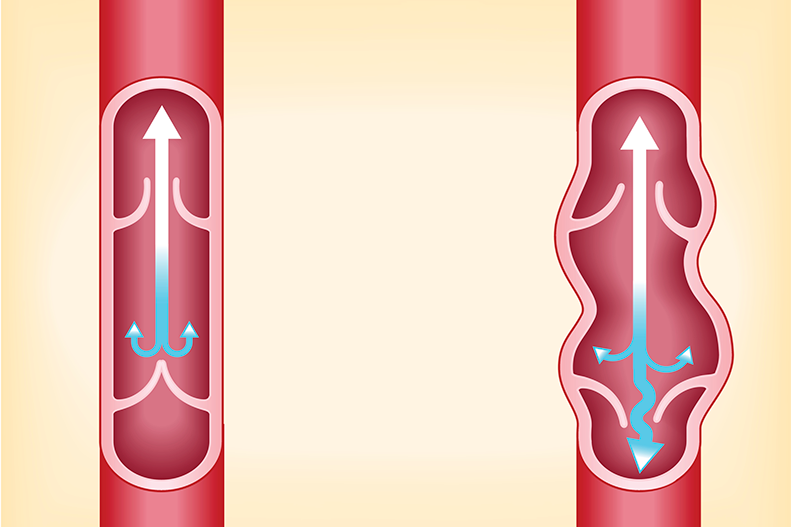Varicose veins are unsightly, enlarged veins that bulge beneath the skin. This condition can cause a great deal of discomfort to a person, as well as make them feel self-conscious. There are a number of factors that cause varicose veins in men and women — from bearing children to obesity to genetics. What many people may not realize is that they do not necessarily have to live with varicose veins. There are a several ways to treat the condition. Here are some commonly asked questions about varicose veins, Symptoms, and the latest advancements in treatment for the condition.
Q. Who suffers from varicose veins?
Not all people with varicose veins will have a clear underlying cause, says Natalie Sridharan, MD, a vascular surgeon with UPMC, but there are a number of risk factors related to the condition. Women who are pregnant – or as they age or gain weight – are more likely to develop varicose veins. Many of the patients Dr. Sridharan treats are people with jobs requiring extended periods of standing, she said, such as nurses and restaurant workers.
“Some of it is luck of the draw, but there are certainly things that put patients at higher risk of developing varicose veins,” she says. “Patients with a history of a DVT (deep vein thrombosis)
or blood clot can be at increased risk… and patients with a family history. There’s a strong genetic component to varicose veins.”
Q. What symptoms do varicose veins cause?
“For the most part, it’s not terribly dangerous, although it can really affect people’s quality of life,” says Dr. Dr. Sridharan. “However, there is a very severe spectrum of disease…that can have such severe venous insufficiency, or such severe pressure in the leg, that they have debilitating swelling, or even to the point that they get venous ulcerations that require special dressing and specialized wound care.”
Q. What can be done to prevent the symptoms from varicose veins?
Q. What if the compression stockings don’t work?
Q. What happens when you see a vein doctor?
Q. What treatments can the doctor offer for varicose veins?
Another treatment option involves injecting a medicine into the vein that chemically treats the vein. The medicine is very safe (it is essentially a soap like substance) and only takes about 5 minutes to
We hope we’ve answered some of your questions about varicose veins. If you are dealing with this condition or have additional questions, visit the Vein Center of the UPMC Heart and Vascular Institute website or call 412-802-3333 to make an appointment.
Editor's Note: This gallery was originally published on , and was last reviewed on .
